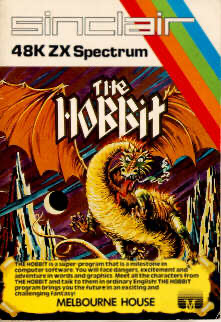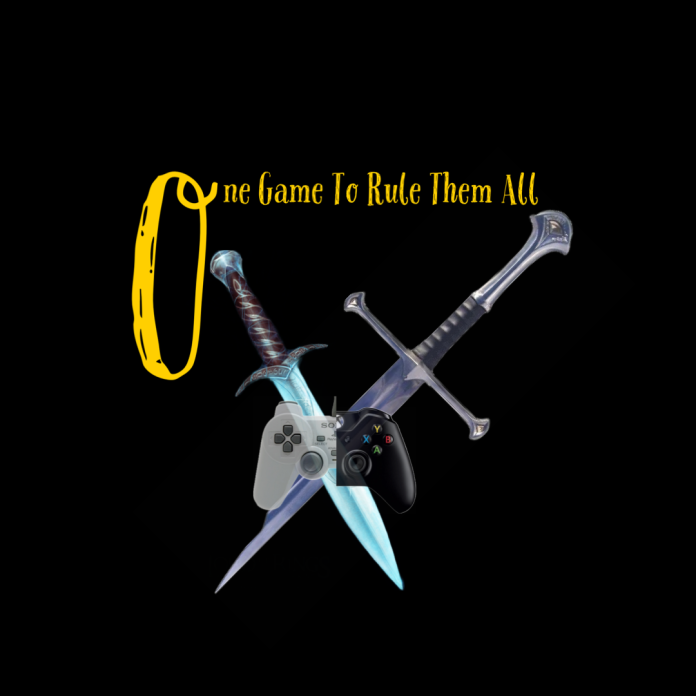This new series will go through chronologically and give a quick overview and review of every computer game in the Tolkien universe.
Hopefully you can use these guides to choose which you would play whilst waiting for the army of Uruks to blow through the Deeping Wall.
The Hobbit-1982

The first game in this series is an illustrated text adventure based on the 1937 book of the same name and was originally released on the Sinclair ZX Spectrum before being converted to other home computers like the Oric System and Commodore 64.
Developed at Beam Software by a Philip Mitchell and computer scientist Veronika Megler, and published by sister company Melbourne House. ‘The Hobbit’ sold over 100,000 copies worldwide in the first two years and due to an arrangement with book publishers every game came with a copy of the book.
The game was innovative for its time with the use of a more advanced parser. In the common tongue ‘parser’ is the system for a computer to understand language input. The more advanced version for this game was called ‘Inglish’ and allowed the player to interact with the world like never before. For instance, most games of the time would respond to prompts like “attack goblin” however in the hobbit you could write “viciously attack goblin with sword” or “viciously attack goblin with axe” and the game would act accordingly.
Gameplay
When entering a new location (and after waiting a few seconds) an illustrated image of said location would appear on the screen. It was then up to you to ‘type’ your way through and explore Middle-Earth.
The game itself was an independent open world, with characters and events occurring all over the map whether you the player were there or not. Meaning you would struggle to have two playthroughs the same without missing something.
The NPCs (Non-Player Characters) also ran independently from the player, with their own set of rules and paths to follow. Each NPC had their own loyalties and strengths that would decide their activities. Gandalf for example would roam freely visiting all of the 50-ish locations, collecting items, getting into fights and even being captured.
All of these features were innovative of the time and are par for the course nowadays, however at the time this wasn’t a polished art and for a game that had story elements can cause problems. The biggest problem being some important characters being killed off towards the start of the game.
Version 1.1 had patches to fix this but came with a new problem that the game was actually unwinnable. Version 1.2 fixed this and some other problems but no other fixes were made to the game.
Following Release
As mentioned earlier the game was a huge commercial success, with 100,000 units being sold in the first two years and eventually over 500,000 units being sold into Europe. Leading computer magazine of the time ‘Info’ gave The Hobbit a rating of 3+ Stars saying “Tolkien fans will most likely be pleased with this title.
Unfortunately, in 1989 another magazine ‘Macworld’ released their review saying the game was “already dated” and very “clumsy”.
Trivia-The phrase “Thorin sits down and starts singing about gold” came from this game.
3+ One Rings out of 5.
Check back next Friday for the next game in the series Lord Of The Rings-Game 1-1985








